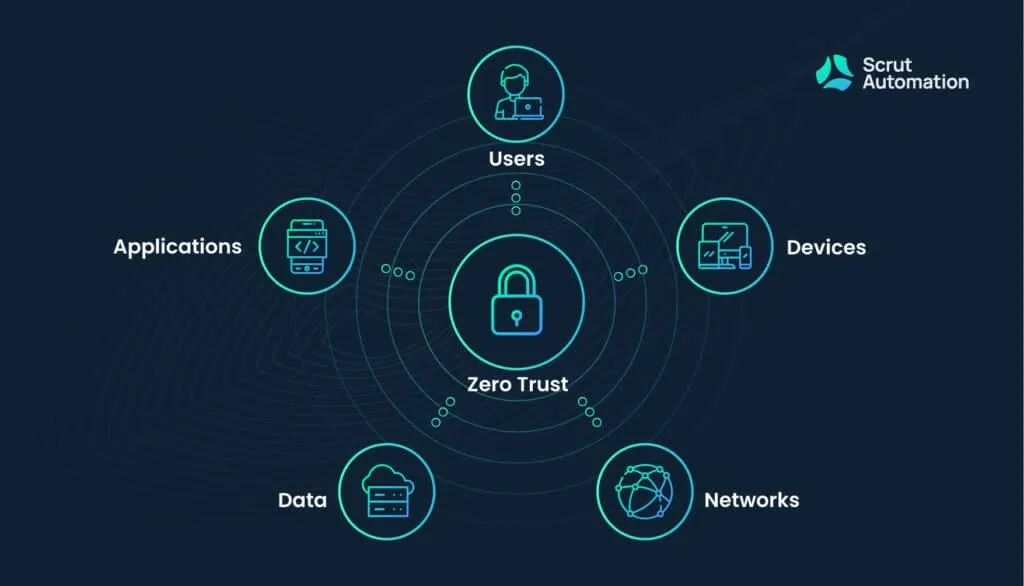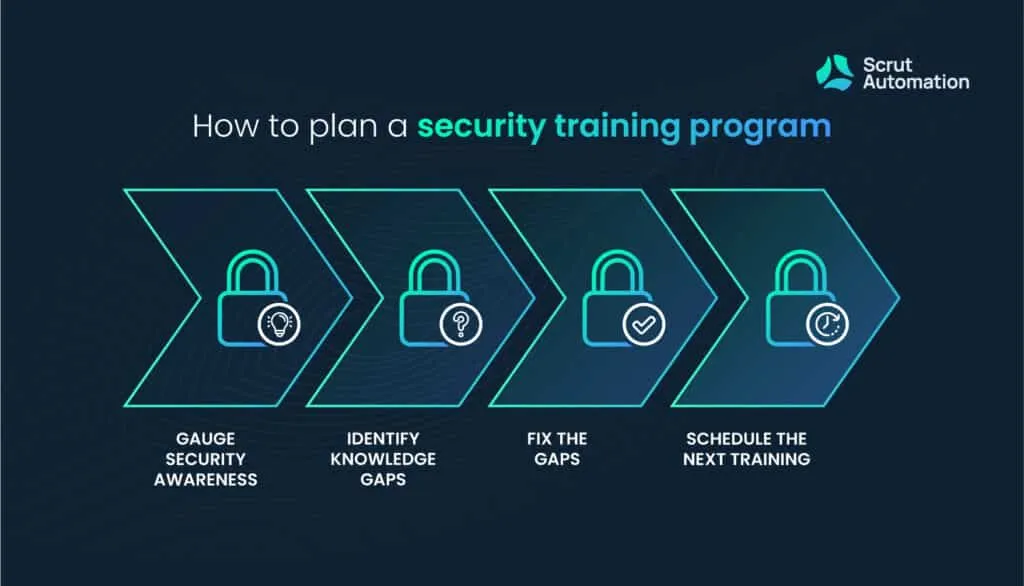10 Ways to Shift Your Organization to a Security-First Mindset

“Better safe than sorry" should be the motto for every organization facing today's unpredictable threat landscape. Security and compliance are no longer a tickbox. They are business drivers that are necessary for a company's survival.
Apart from the constant threat of cyber-attacks, a company that is not secure will also repel customers and investors and have regulatory bodies breathing down its neck.
For a company to stay alive and thrive, it has to opt for a security-first mindset.
This mindset is a company-wide necessity.
Every single employee is responsible when it comes to cybersecurity. The burden of security should not be placed on the security team alone.
Adopting this mindset takes time, but once it is part of a company's culture, cybersecurity awareness will become second nature to employees. A small step such as organizing a company-wide security awareness training program goes a long way in ensuring security in the long run.
In this blog, we discuss ten practices that will help shift an organization to a security-first mindset. But before we do that, let's learn more about what this mindset is and why it is necessary.
What is a security-first mindset?
A security-first mindset is one that weaves security into every process that an organization carries out at every level. A company that has a security-first mindset constantly seeks ways to implement security and employs a set of practices that help prevent, monitor, and tackle security threats.
A company with a security-first mindset takes great care to cover all bases when it comes to security. Every employee in such a company will do their best to cooperate with the security initiatives, making security a unified effort.
Why should an organization opt for it?
Making security a priority should be at the top of every organization's checklist. Hackers are constantly on the prowl, innovating ways to get a foot in the door. Unfortunately, many organizations make it easy for them.

A majority of data breaches are caused by the oversight of employees. This is something that could easily be avoided by organizing a security awareness training program.
Security risks are dangerous, but they are avoidable. An organization that has a security-first mindset makes it extremely difficult for hackers to carry out their missions and does not give them any leeway to wreak havoc.
How to customize a security-first mindset for your organization
A security mindset is key when it comes to protecting the sensitive data of an organization, its customers, investors, and vendors. For this mindset to be effective, it is important for an organization to customize a security program according to its specific needs. Here are three ways to do this.
1. Conduct customer research
Every organization caters to different customers, and it is important to gauge their needs.
Today, more and more customers are wary of companies that collect personal information. It is important for a company to know its customers, but how does it go about doing it non-invasively?
By conducting customer research.
Customer research helps understand the needs of your customers and will enable you to come up with a security plan that best suits your customers and your company.
By taking into account your customers' requirements, you will not only satisfy your customers but also boost your company's reputation.
2. Come up with a cyber incident response plan
Creating a cyber incident response plan will enable employees, stakeholders, and partners to prepare for, prevent, recognize, and recover from security threats.
By customizing a response plan according to the needs of your organization, you can devise the best ways to prevent security threats and mitigate their impact in the event of an attack.
3. Allocate funds for security
From hiring new security talent to investing in the latest security tools, the budget for security is taken seriously by an organization with a security-first mindset.
An organization should assess its security needs, see where it is lacking, and allocate funds to take care of any gaps in its security.
Ten ways to shift your organization to a security-first mindset
1. Conduct a security awareness training program for all employees
Conducting a security awareness training program is probably the most important step when it comes to creating a cybersecurity culture in your organization. It is necessary for every single employee in an organization to be aware of the best security practices that they should be following.
Since any small error by an employee can compromise a company's safety, employees should be made aware of the impact of their actions. Learning from security incidents that other organizations went through can help employees be more vigilant.
These programs don't have to be mundane. Some companies set a good security training awareness program example by rewarding their employees when they complete their training. They also make employees feel more involved and invested in the security process by giving them specialized roles in security.
2. Always keep the security team in the loop
Communication between the security team and all other departments is a requisite for a security-first organization.
Changes in operation, tools, and architecture should be discussed with the security team before they are carried out. This is because any change has the potential to be a security risk.
The security team can review the changes and implement the security practices that apply to them, ensuring that they do not make the organization vulnerable to security threats.
As engineers develop new technologies, they must keep the security team in the loop so that they can develop security tools for them simultaneously. This collaborative effort is necessary to help the organization advance securely.
3. Leadership should address the needs of the security team
A security-first mindset should start from the top. Leadership should listen to the needs of the security team and actively support them.
From hiring new security talent to allocating funds for new cybersecurity programs, an organization's security depends on its leadership.
When the people at the top prioritize security, all other employees will follow suit.
4. Have a comprehensive security plan in place
From employee IDs to state-of-the-art security tool stacks, a comprehensive security plan uses the best internal controls to cover all bases.
This plan should be flexible and dynamic. Cybersecurity must take into account changes in technology, the threat landscape, and operations.
For instance, working from home has become the norm for several companies post the pandemic. This has led to the need to secure the devices used at home by employees. The use of technology such as VPNs and authentication tools helps companies do this.
5. Practice zero trust security

A zero trust network is one of the best ways to ensure an organization's security. But, what is zero trust?
It is a security framework that allows a user access to the company's cyber assets only after they prove that they are authenticated, authorized, and validated to do so.
Even employees of an organization are denied access to certain cyber assets if it does not pertain to them.
Zero trust assumes that everyone and everything is a potential security risk until they are verified. It keeps the organization safe by employing practices such as multi-factor authentication and encryption of data, and by securing all communication within an organization.
6. Document security processes and policies
By documenting its security processes and policies, an organization minimizes confusion regarding its security practices. Having them in writing provides clarity to employees across the organization and helps in reinforcing a security-first mindset.
The documents should outline in simple terms how security threats can be prevented and what to do in case there is a security breach.
Having the practices on paper will ensure that the same secure behavior is followed uniformly by all. These documents will, quite literally, have everyone in the company on the same page when it comes to safety.
7. Assess security posture regularly
Once a good security process is in place, it will need to be reviewed and improved upon frequently. A good security posture will grow with the growth of an organization.
By conducting regular internal audits and adhering to industry frameworks such as SOC 2, an organization can assess and update its security posture diligently.
8. Use automation tools
Using automation is a surefire way to fortify your organization's security posture. Security automation tools monitor, analyze, and resolve security threats quickly and efficiently.
Using automation tools, like Scrut, will ease the burden on the security team and free up their time to innovate better security solutions.
Quick incident response and round-the-clock monitoring make automation a handy tool to combat security threats. Investing in automation is one of the best ways to shift your organization to a security-first mindset.
9. Codify policies and processes
It is a good idea to start codifying policies and processes even when an organization is pre-product and pre-customers. It helps in keeping the entire company in the loop.
When access policies are codified into source code, it enables employees to know who is permitted to work with what.
This strategy not only has operational benefits, but it also helps an organization shine during compliance certification audits. It also helps team members know what went on before their involvement.
10. Establish uniform protocols and centralize accountability
By establishing uniform protocols for all employees from the start, individual security decisions won't be mandatory.
A security-first mindset requires both management and employees to be aligned with their organization's business and goals. They need to speak the same language. A security-first mindset must be a cooperative effort rather than an imposition.
All employees across departments must be on the same page when it comes to security practices. Fragmentation of security practices should be kept to a minimum to avoid lags in the implementation of security.
How to conduct a security awareness training program

As we have already mentioned, conducting a security awareness training program is one of the best ways to ensure a healthy cybersecurity culture in an organization.
Here are a few steps that will help boost your organization's security training program.
Measure the degree of security awareness and interest
It is a good idea to gauge the level of security awareness among employees before conducting a security training program. Identify the areas where employees need more awareness, and plan the program accordingly.
Set goals
Once you figure out the areas that require attention, make tackling them the goal of the program. For instance, if employees are likely to click on phishing emails, focus on teaching them how to recognize suspicious emails.
Set deadlines and create a roadmap for activities
Short programs with specific targets are likely to be more effective than long-drawn ones that result in information overload.
It doesn't have to be a lecture. Activities such as phishing simulations will help train employees better than just telling them what or what not to do.
Conduct security training programs regularly
Since the threat landscape as well as the ways to tackle it keep evolving, employees need to be updated regularly on the best security practices. Security programs should not be a one-time thing. It is essential to conduct training programs regularly.
Conclusion
By putting security first, an organization protects everything it works hard to bring forth to the world. A company can have the most brilliant, life-altering technology, but if it suffers even one security risk, it jeopardizes the pull it has on customers, investors, and the general public.
A security-first mindset is the best approach an organization can adopt to keep its security on track.
Using a cybersecurity and compliance automation platform like Scrut will help foster this mindset across an organization.
From spreading security awareness among employees to easing the burden on the security team, Scrut will help your organization achieve its business goals without compromising on safety.
If you're interested in learning more, click here.



















